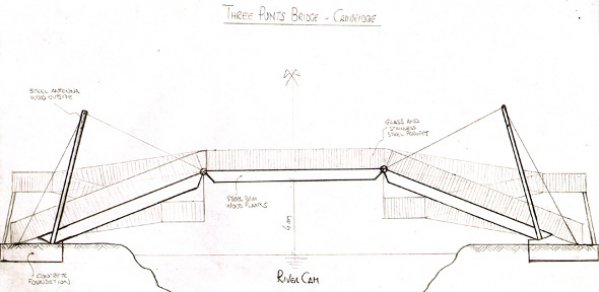
The Department's Outreach Officer Dr Joy Warde recently ran two competitions to design bridges for the River Cam to mark the University's 800th anniversary celebrations. CamBridge Junior Competition (ages 5-11) and the CamBridge Senior Competition (ages 11-99).
The Junior Challenge (ages 5-11)
The junior challenge was to consider what the bridges of the future will look like and to design a foot and cycle bridge for the River Cam for 2109. There must be a clearance of 4m at the mid point of the bridge to allow boats to pass underneath.
Entries were judged according to their aesthetics, quality of drawing and technical plausibility.
The two winning designs will be included in the “Letters to the Future” which will be stored at the University Library until 2109. These letters will be opened during the 900th anniversary celebrations.
Winner 5-7 age range
The 'Rowing Boat' by James Pachebat, aged 7 from Stuntney, Ely.
Winner 8-11 age range
'The Three Punts Bridge' by Riccardo Nori, aged 8 from Bourn.
The Senior Challenge (ages 11-99)
On Saturday 20 June local families and schools were invited to build a model bridge for the River Cam. The eager contestants designed, made and tested a model bridge.
Teams were 4-6 people. A list of acceptable building materials and competition rules were sent to all participants in advance of the competition. All teams were encouraged to plan their bridge design in advance of the competition as the construction time was very short. Teams could build and test their bridge at the Department or build their bridge at home and bring it to the Department for testing.
The bridges were judged on the basis of:
- The maximum load it can support at mid span
- The maximum load divided by the weight of the bridge (a measure of efficient use of materials)
- Aesthetic appeal
The winning teams








